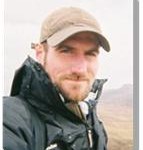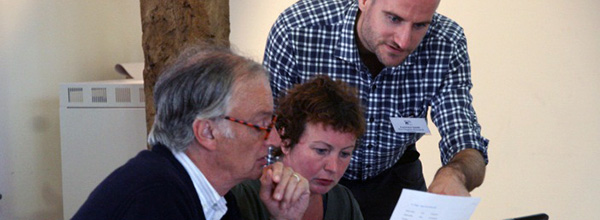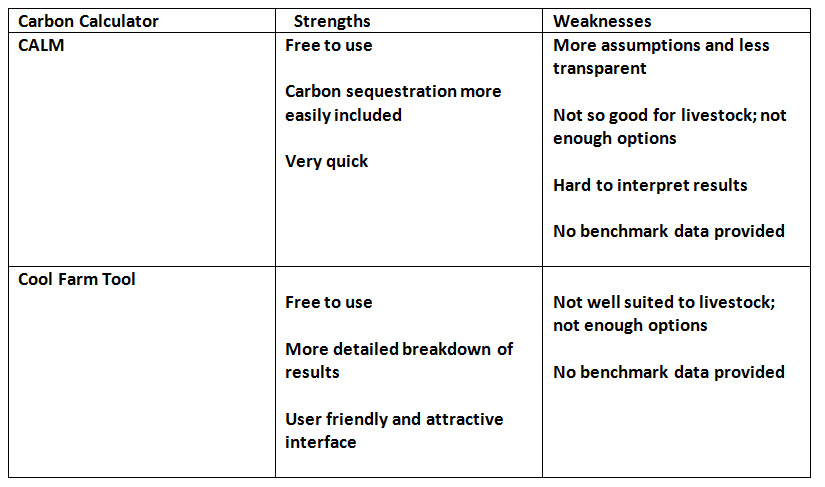In the end of September, a workshop on the topic of practical sustainability assessment for dairy producers was held in the UK. It provided an opportunity to gather feedback from farmers, consultants and stakeholders on the current SOLID results on this topic.
By Laurence Smith, Sustainability Researcher, The Organic Research Centre, Elm Farm (ORC)
On the 24th September 2014 a workshop was held at The Organic Research Centre, Elm Farm on the topic of practical sustainability assessment for dairy producers. The workshop provided an opportunity to gather feedback from farmers, consultants and other industry stakeholders on the results from the sustainability assessments and methodology development carried out within workpackage 4 to date. The day also presented the opportunity to try out some of the most popular carbon footprinting tools currently available.
John Hermansen of Aarhus University began by providing an overview of the SOLID project and workpackage 4, highlighting the outputs for industry (e.g. a toolbox for sustainability assessments) and policy makers (e.g. dairy system comparisons). Laurence Smith of ORC then provided an overview of the different methods used to calculate carbon footprints of farming systems and the online carbon footprinting tools currently available. The results from the assessment of 34 organic dairy farms were then presented by Sanna Hietala of MTT. The assessment showed that higher milk yields resulted in lower carbon footprints per litre of milk across the countries assessed.
The participants were then asked to complete a practical exercise with two carbon footprinting tools, using example farm data provided by ORC. The tools used were CALM (Carbon Accounting for Land Managers), a whole-farm assessment tool that accounts mainly for emissions within the farm gate, and the Cool Farm Tool, a Life Cycle Assessment (LCA) tool that assesses greenhouse gas emissions per unit of agricultural product(s) and includes all emissions associated with the supply chain.
Following the exercise, the differences between the methods used within both assessment tools became clear. When comparing the results of the example farms Dairy Farm 4 had a negative carbon balance within the CALM tool (i.e. net carbon sequestration overall) due to the amount of woodland, whereas the same farm had the highest carbon footprint per litre of milk within the Cool Farm Tool as a result of the low milk yield (see Table 1). Conversely, Farm 1 had a low carbon footprint when assessed with the Cool Farm Tool, due to a higher milk yield, and one of the highest footprints when assessed with CALM, due to high rate of diesel and electricity use.
Table 1: Carbon footprint results calculated for the example farms using CALM and the Cool Farm Tool:
The exercise highlighted the importance of the method used and the unit of comparison used when assessing the carbon footprint of farming systems. The overall message was that the best approach is to use the same tool each year to monitor long term change due to wide differences in the results between the tools. At the workshop, most of the participants preferred the Cool Farm Tool as it was found to be easier to use and interpret the results, although the fact that sequestration can be more easily incorporated within CALM was appreciated (see Table 2). For both tools the lack of benchmark data was felt to be a drawback as this makes it difficult to assess farm performance.
In the afternoon session, Marie Trydeman Knudsen of Aarhus University presented an overview of methods for assessing biodiversity and soil C within an LCA framework. The biodiversity assessment method that has been applied calculates a biodiversity loss index for production systems through the application of a Potentially Disappeared Fraction (PDF) coefficient which is calculated in accordance with a method described in deSchryver et al. (2010). The calculation allows for an estimate of the Biodiversity Damage Potential amount (PDF/m2 occupied for the production of 1 kg of milk which can be presented alongside the results from ‘standard’ LCAs (e.g. the total GHG emissions per kg of milk). The method for incorporating soil carbon sequestration within an LCA framework was also presented in the afternoon. The method suggested is an adaptation of the decay curves used within the Bern Carbon Cycle model, which represent the non-linear accumulation of soil organic carbon over a 100 year time-frame, following the addition of organic material. Both methods were well received by the participants. It was appreciated that calculation of the indicator for biodiversity loss and carbon sequestration at a specific farm did basically not require more data than is typically needed for an LCA of a dairy system, although some commented that the economic dimension is of primary importance for most farmers and it would be helpful if this element could be incorporated within the framework being developed.
Table 2: Views expressed on the strengths and weaknesses of the tools:
Overall the day provided a useful overview of the tools and methods currently available for UK dairy producers. The comments and feedback in the relation to the assessment tools and methods presented will be taken on board and considered within a task in work package 4 devoted to the production of a sustainability assessment toolbox. A second workshop covering the same topic is planned to be held with representatives from the industry in Denmark in 2015.
The workshop organisers would like to thank the participants, the presenters and the authors of the carbon footprinting tools for their respective contributions to the day.
AUTHOR

References:
De Schryver AM, Goedkoop MJ, Leuven RSEW, Huijbregts MAJ (2010) Uncertainties in the application of the species area relationship for characterisation factors of land occupation in life cycle assessment. International Journal of Life Cycle Assessment 15: 682–691.
Carbon Accounting for Land Managers Tool – try it here.
The Cool Farm Tool – try it here.
More pictures



